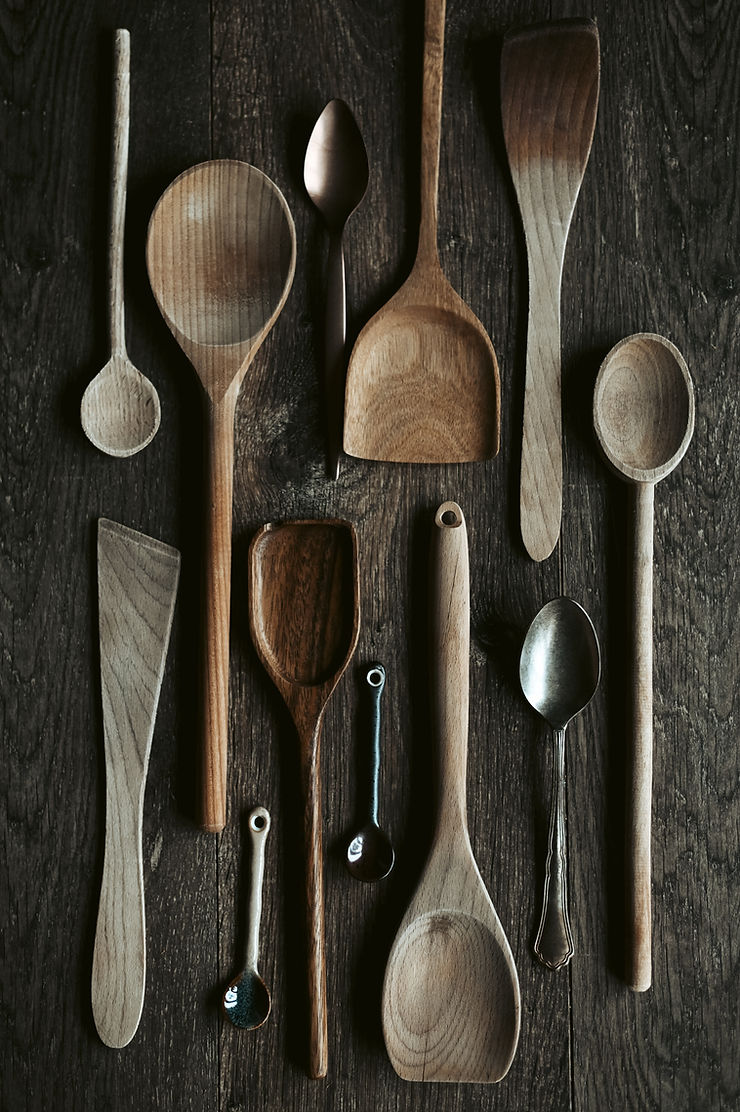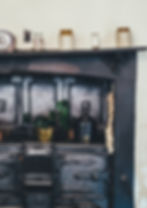Measure Out: A Guide to Understanding Old Recipe Measurements
- Emma M

- May 10, 2021
- 4 min read
I love good old recipes. One filled with little handwritten notes, splash stains, worn edges, everything that shows the love and age of a recipe. Making a vintage recipe is a continuation of love and tradition, sharing a meal with those in the past. However, while vintage recipes translate the love to its modern audiences, it doesn’t always translate it’s measurements well. Too often, I’m left relying on my sous-chef, Google, to try and decipher the measurements of the past. Like, what's a heaping cup? A knob? A smidgen?? Well dear reader, after extensive research and a long google research session, I’m happy to declare myself as your translator to historical measurement! (Note: I will be using the US measuring system throughout this post and the blog, so apologies to my overseas chefs!)
Spoons & Stuff: Now while some of our past chefs were kind enough to use the now common teaspoon and tablespoon measurements, there wasn’t much of a standardized spoon system. Mass-produced utensils were not widespread yet, and cooks were expected to have some knowledge of the ideal amount and result. Instead, recipes utilized common kitchen utensils and imagery for readers to have some idea of size. These range from a smidgen, which is ½ a pinch or 1/32 tsp (a teaspoon), to a cooking spoon being 3 tbsp (tablespoon). Here's a little layout of vintage spoons & stuff equating to our modern measurements: Pinch = ⅛ tsp Knob = 2 tbsp Salt spoon = ¼ - ½ tsp Coffee spoon = ½ tsp Kitchen spoon = 1 tsp Dessert spoon = 2 tsp Jigger = 3 tbsp

Cups & Containers: Now, if you thought that there were a few too many spoons in the last section, prepare yourself for the sheer overload of cups and containers coming your way. Our vintage chefs certainly had a lot of measurement utensils to choose from when it came to measuring out their cup sizes and were bold enough to assume that their readers would understand their intention. In past times, kitchens and dining rooms were more equipped with dishware and As that might have been true a few decades (or centuries!) ago, we modern audiences need a little assistance differing our jackpot from our pottles! Take a look at these potential measurements: Fistful = ¼ cup Jackpot = ¼ cup Gill / Jill = ½ cup Wineglass = ¼ cup Teacup = ½ - ¾ cup Coffee cup = 1 cup Glassful = 1 cup Tumbler = 1 cup Saucer = 1 heaping cup Heaping cup = 1 cup + 2 tbsp Breakfast Cup = 1 cup + 3 Tbsp Scant Cup = 1 cup minus 2 tbsp Pottle = 8 cups

Ingredients & I: In addition to all these different cups, utensils, and archaic wordings, we also have to take into account that ingredients and their sizing were also different in different eras. As we can probably expect, butter wasn’t neatly packaged into cute rectangles to buy at their local market, but rather a large home-churned lump of fresh butter! Sugar was also difficult to uniformly size, as it was often preserved in sugar loaves and cones to avoid spilling and getting wet. And, people were expected to create their own forms of sugar that we can buy today- granite sugar, castor sugar, powdered sugar, and confectioner’s sugar. Therefore, our past chefs had to get creative with describing (and eyeballing) how to measure out ingredients. These equivalents will hopefully help you take out the guesswork in your next vintage recipe: Hen’s egg = ¼ cup or 2 oz Knob = 2 tbsp Size of a Walnut = 1 tbsp Cube of butter = 1 stick or ½ cup Fistful = ¼ cup Handful = ½ cup Dollop = 1 ¼ tbsp Blub = 2 to 4 tbsp Chunk = 2 to 3 tbsp Thought = a small dash or ½ dash Sugar Loaf = 9 to 10 lb. lump of condensed sugar Cut of Sugar = desired amount to sweeten your dish

Ovens of Old: Lastly, we need to figure out how to cook our dish now that we’ve measured everything out and (hopefully!) mixed it. Today, modern kitchens give us the ability to electronically set out temperatures and see the oven’s current heat. But before the 1920s, gas and electric ovens were irregular for the common kitchen, and most relied on wood or coal-burning stoves, which had no real way of gauging your temperatures while cooking. So, to avoid burning your food… or house… allow me to give some oven temperature translations: Very Slow Oven = below 300० Slow Oven = 300० Moderate Oven = 325० Rather or Moderately Hot Oven = 375० Quick Oven = 375 - 400० Hot Oven = 400 - 425० Very Hot Oven = 450 - 475० Extremely Hot Oven = 500० or more

I hope that this little guide will help you navigate through your historical kitchen and cookbooks and that it saves you from the guesswork of old-fashioned cooking! Feel free to refer to this post when exploring the recipes that we will explore on this blog, and happy eating!
